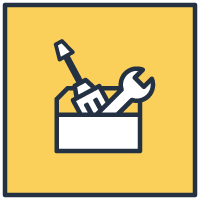Transition Assessment
1.1 Initiate planning to develop a vision for the future
Gather information on the student's strengths, interests, and dreams for the future (e.g., use a person-centered planning process). Use this information and other relevant assessment findings to inform educational programming. Document in the IEP.
1.2 Identify key personnel
Ensure that personnel with expertise in transition are involved in planning and conducting assessments.
1.3 Establish a process to collect and organize assessment information
Gather information related to the student’s strengths, preferences, and support needs. Document unique mannerisms, health profile, communication preferences, level of hearing and vision, and other key information.
1.4 Consider the student's involvement with family and the community
Document current interests related to recreation, leisure, daily living, personal care, community, family, and career exploration.
1.5 Collect and organize information about support needs
Make sure the student’s support needs (e.g., assistive technology, accommodations, modifications) are included in the assessment process.
1.6 Explore access to appropriate general education
Build connections to the general education setting and curriculum. Include the expanded core curriculum.
1.7 Assess self-determination skills
Evaluate the student’s ability to self-advocate and make choices.
